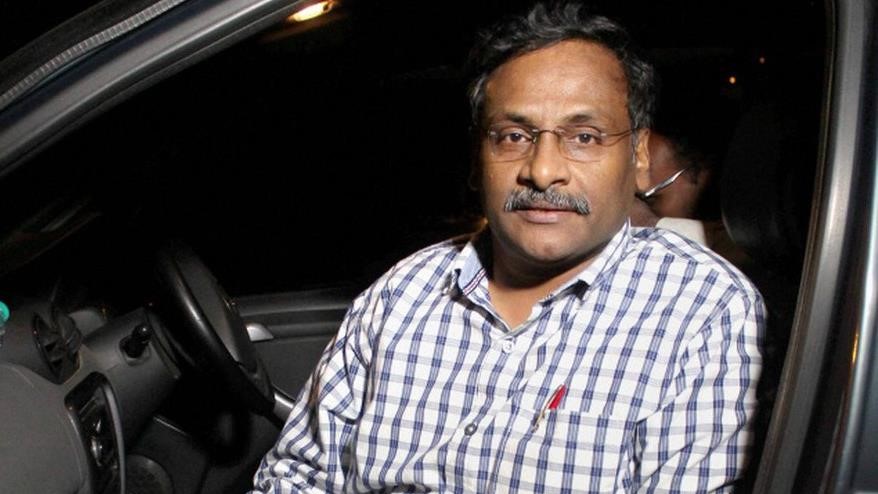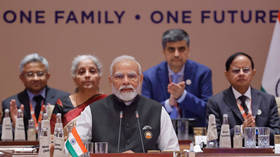NOVANEWS
IsraHell Aerospace Industries’ (IAI) Heron unmanned aerial vehicle (UAV) is set to add another to its list of targeted victims, adivasi (tribal) militants in central and eastern Indian states. The Daily News & Analysis of Mumbai notes that the national government will undertake “a first-of-its-kind effort to counter Maoists” and will deploy the IAI “Heron’s eagle eyes to track their movements on [a] real time basis.” [note: ‘the Centre’ – found throughout the linked article – is a term used in India to refer to the national government and ‘Naxalite’ is a term used to refer to the various communist adivasi groups engaged in armed struggle to protect themselves and their lands, formerly from the Forest Department, now primarily from mining companies, the police, and local paramilitaries.]
Arundhati Roy’s stellar 2010 essay “Walking With The Comrades” is a vital read for understanding the Naxalite struggle and a 2009 essay of hers – “Mr. Chidambaram’s War” – also offers tremendous context. For months now, the Indian press has been filled with discussions about deploying the nation’s UAV fleet against the Naxalites. For reasons of budget, training, local police rejection, technological problems (mostly questions about the efficacy of the Heron’s capability for surveillance in the dense jungle where the Naxalites are strong) and political sensibilities, the decision was not made until now.
India first ordered the Heron UAV in 2001, then placed further orders in 2003 and 2005. IAI’s drone sales to India go back to Heron precursors such as the Harpy (1995), Searcher (1996), and Searcher II (2000, 2002). The firm has also played a major role in developing Indian drone technology and has signed several joint-development agreements with Hindustan Aeronautics Ltd. and Jubilant Bhartia Group.
To date, UAVs have primarily been deployed along India’s coastline and the borders with China and Pakistan by the Army and Navy, and in the disputed region of Jammu and Kashmir, especially during the 1999 Kargil War. Now they are to be deployed against what Prime Minister Manmohan Singh called “perhaps [India’s] gravest internal security threat.”
Roy and the Naxalites themselves portray things differently. Roy points to a 2008 report [PDF] from a panel of experts commissioned by the Indian government itself which states:
However, the Naxalite movement has to be recognised as a political movement with a strong base among the landless and poor peasantry and adivasis. Its emergence and growth need to be contextualised in the social conditions and experience of people who form a part of it. The huge gap between state policy and performance is a feature of these conditions. Though its professed long term ideology is capturing state power by force, in its day to day manifestation it is to be looked upon as basically a fight for social justice, equality, protection and local development.
The Naxalites then can only be a grave security threat if current Indian policy offers no recourse for demands for social justice. If the Indian state was amenable to social justice it could simply accede to the just adivasi demands, almost instantly removing any threat from militants. Instead, India has declared war on its own citizens.
Roy points out the language often use to describe the targeted areas such as ‘Maoist infested‘ or ‘Maoist afflicted‘. The use of public health and epidemiological terminology points to solutions much more like disease eradication than population engagement (this despite the panel of experts stating explicitly that “Since the goals of the movement are political it has to be addressed politically.”).
In the best of times, which have not been very good, the Indian state has neglected entirely the adivasi communities. When the ‘democratic’ Indian state has engaged, common results have been brutal and tragic. The panel of experts listed some of the norms:
-
Social boycott.
-
Denial of employment.
-
Consumer segregation (not being allowed to buy certain products, such as fish).
-
Denial of the right to vote.
-
Public insults and humiliation by upper castes.
-
Forbidding the carrying out of cultural practices.
-
Theft of goods by police and upper caste persons.
-
Forced nude marches through public areas.
It gets worse:
-
Violent suppression of political demonstrations.
-
Being force-fed excrement (in the case of a carpenter who demanded pay owed for work).
-
Indentured servitude/debt peonage.
-
Arbitrary arrest, torture and detention.
-
Arson by police, landlords and upper caste individuals and groups against houses and entire villages.
-
Amputations of hands, fingers and limbs by upper caste persons.
-
Kidnapping and murder by upper caste persons.
-
Mass extrajudicial executions (“encounter killings”) by police and paramilitaries.
-
Systematic rape by police and military.
The desire to keep this piece manageable demands ending the list there.
And who are the Naxalites the Heron will be deployed against? Roy describes them as such.
The Maoists’ guerrilla army is made up almost entirely of desperately poor tribal people living in conditions of such chronic hunger that it verges on famine of the kind we only associate with sub-Saharan Africa. They are people who, even after 60 years of India’s so-called Independence, have not had access to education, healthcare or legal redress. They are people who have been mercilessly exploited for decades, consistently cheated by small businessmen and moneylenders, the women raped as a matter of right by police and forest department personnel. Their journey back to a semblance of dignity is due in large part to the Maoist cadre who have lived and worked and fought by their side for decades.
Their public image is one of a savage group attempting to keep India in the Stone Age by perpetrating brutal attacks against agents of progress and development. The brutality of Naxalite attacks and ambushes is undeniable. Some attacks are impossible to defend, at least to defend sensibly. But as Roy points out, “People have the right to resist annihilation.” Annihilation is what the adivasis are facing. India’s largest newspaper, Times of India, noted in 2009 that the “Naxal cancer” is spreading. The only answer to cancer of course, is to cut it out. That is the policy being pursued and that is what the Heron will be deployed for.
To date the Heron is being, has been or will soon be deployed against:
-
The Palestinian and Lebanese people, for use against whom it was developed.
-
The Iraqi people by Australia.
-
The Afghani people by Australia, Canada, France, Germany
-
The Kurdish people by Turkey.
-
Favela dwellers in Rio in Brazil (though the much more sensible policing policies being pursued by elements of the Rio police and national government allow for the possibility that it will not lead to human rights abuses).
-
Narcotraffickers around El Salvador by El Salvador and the US (while narcotraficantes don’t deserve much sympathy, the history of US-led anti-drug efforts have invariably included massive injustices).




One thought on “IAI Heron UAV to deploy against adivasis in India”
Thanks for the something totally new you have unveiled in your blog post. One thing I would really like to reply to is that FSBO associations are built over time. By introducing yourself to owners the first saturday their FSBO is definitely announced, before the masses start calling on Mon, you create a good network. By sending them equipment, educational resources, free reviews, and forms, you become a strong ally. By using a personal interest in them as well as their circumstances, you create a solid interconnection that, in many cases, pays off once the owners opt with a representative they know plus trust — preferably you actually.